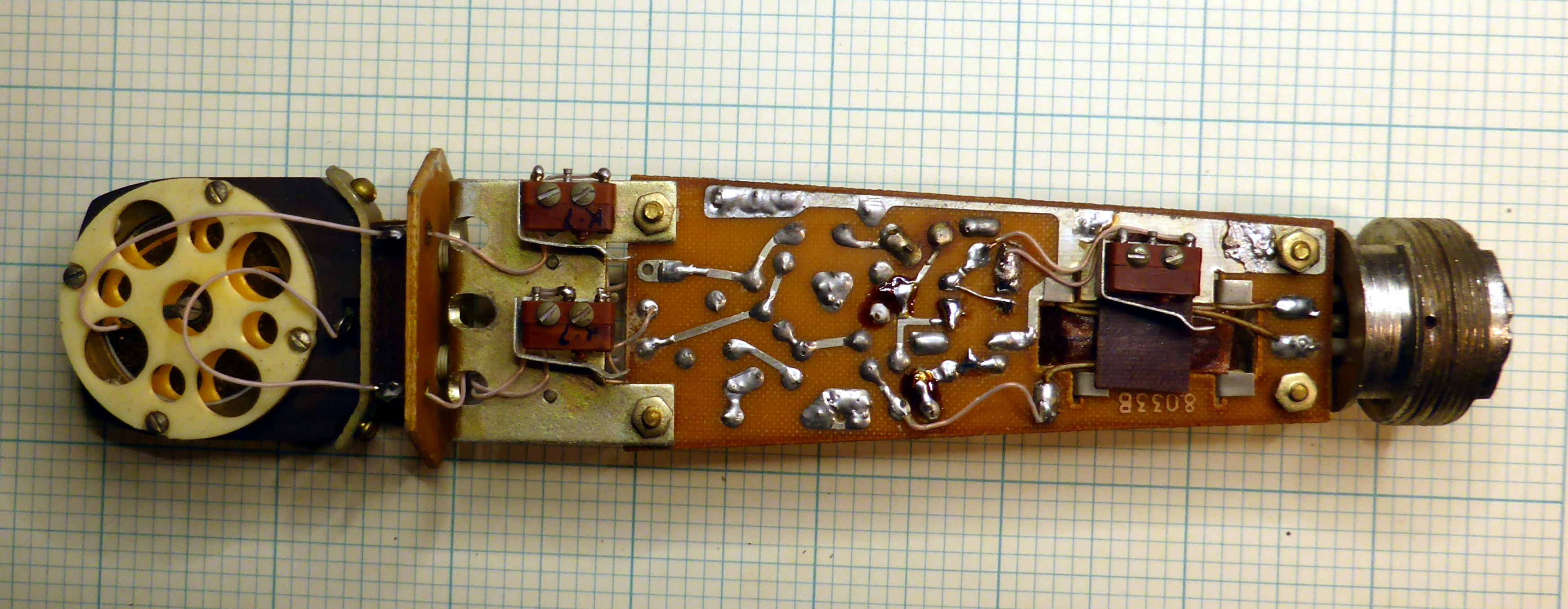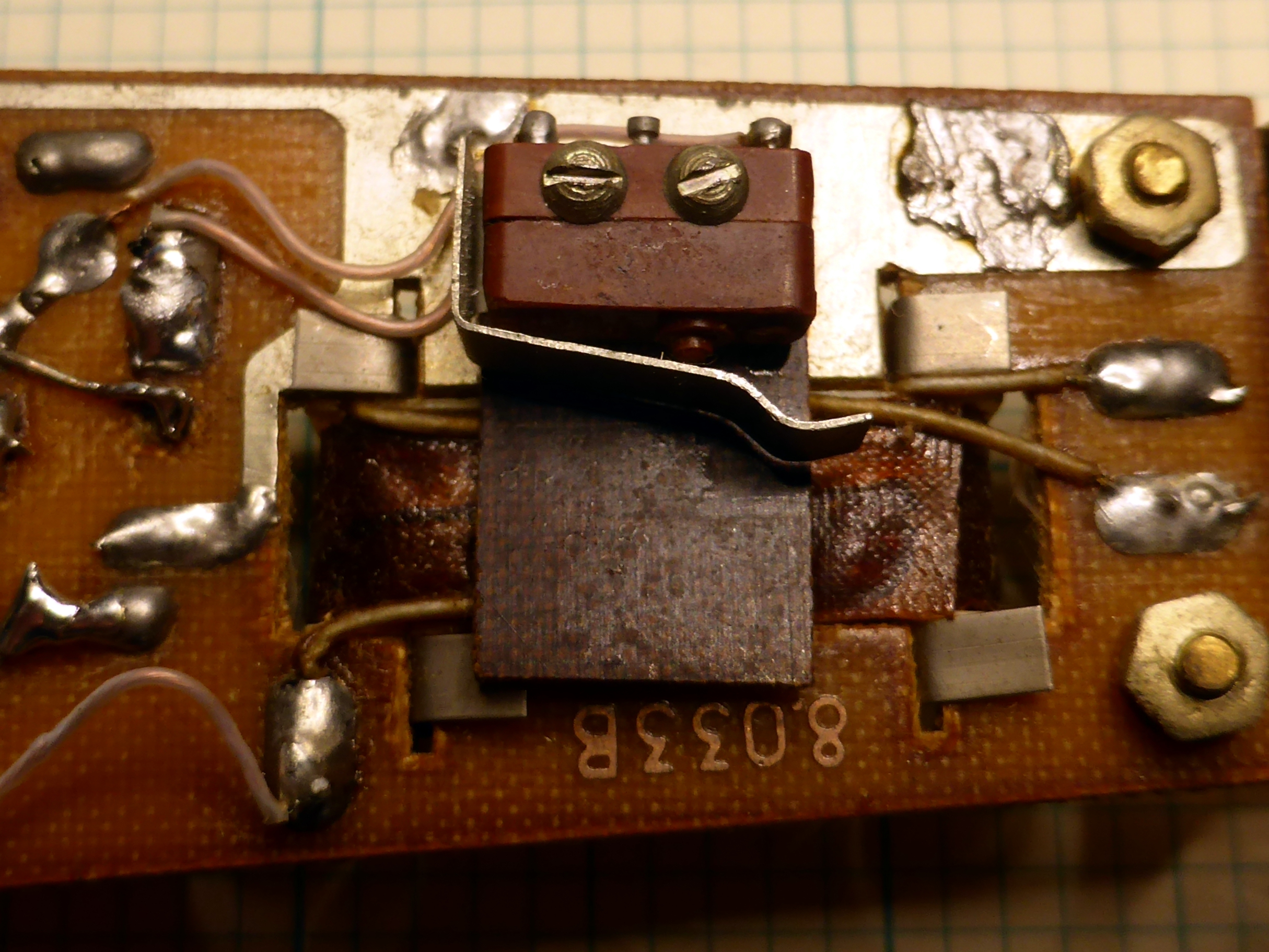


|
Oktava MK-18 front view |

|
Oktava MK-18 back view |

|
Case opened showing how the switches work |

|
The switch operating thingy and headbasket |

|
The diaphragm is in good condition. This seems to be very heavy gold deposition compared to many modern capsules |

|
The transformer connections do not correspond to the original Oktava diagram which is available various places on the interweb, the secondary centre-tap is used to feed the electronics directly rather than through the two resistors shown on the outer terminals. The switch connections are also incorrect on that diagram |

|
The FET and BJT. The orange thing which looks like a capacitor is the BJT |

|
Back case switch-operating tackle |

|
Top (front) |

|
Solder side (back), switches 3, 4 and 5 |

|
Close-up of pattern selector switches 1 and 2 |

|
A complicated capsule mounting assembly. I think it would be better to not use the terminals and pass the wires straight through some holes in the board |

|
Switches 3 and 4 |

|
Switch 5 mounted under the transformer |

|
Looks like someone made some small mistakes in the tracking which had to be bodged with pieces of wire. It's not easy designing PCBs without computer assistance. Been there, done that. |

|
Note how the flanges at the connector end are on top of the PCB (ie component side), while at the capsule assembly end are on the bottom of the PCB. A spacer under switch 5 raises it to the same height as switches 3 and 4. Embiggen this picture for a better look. |